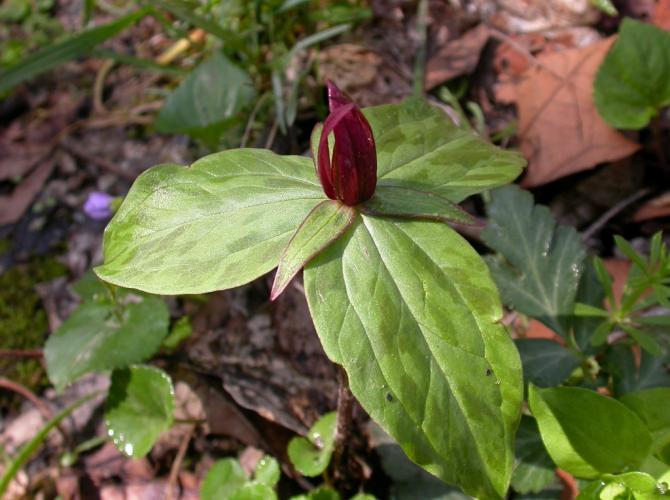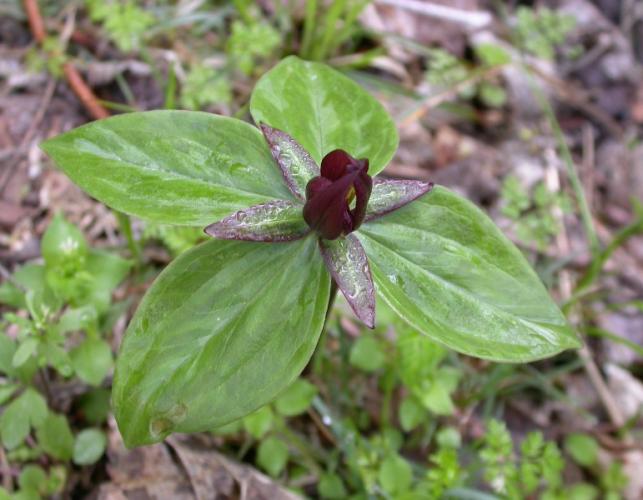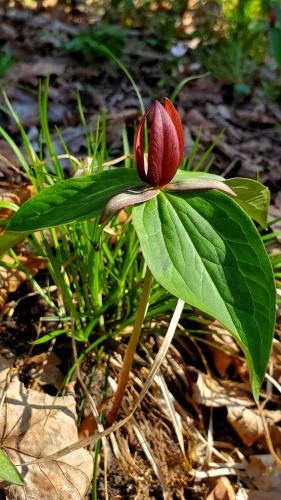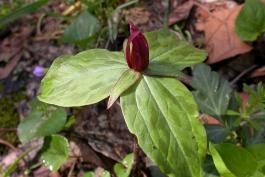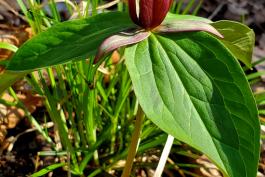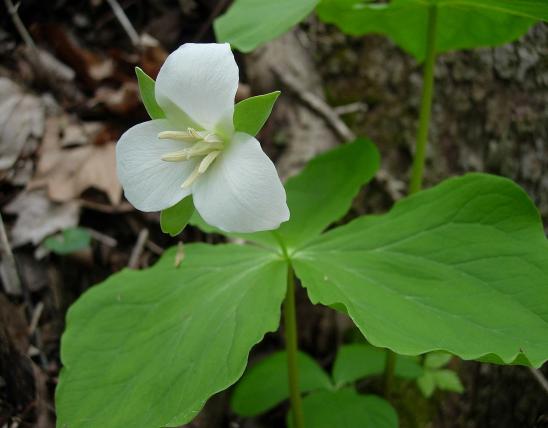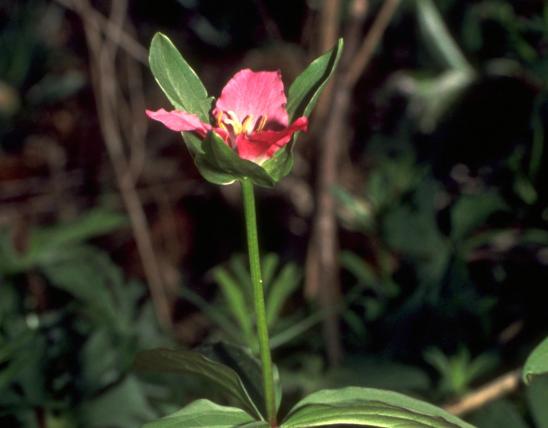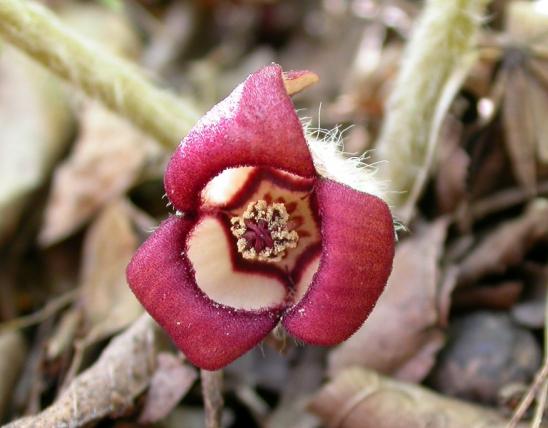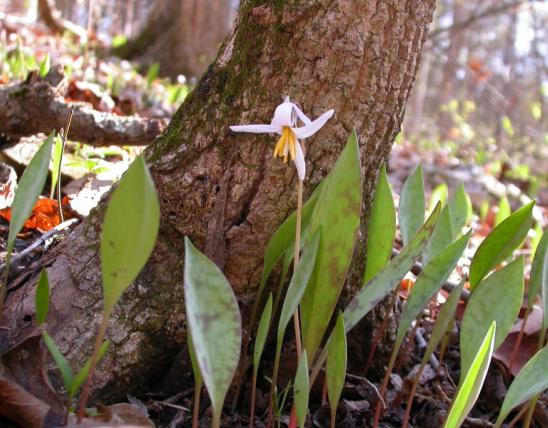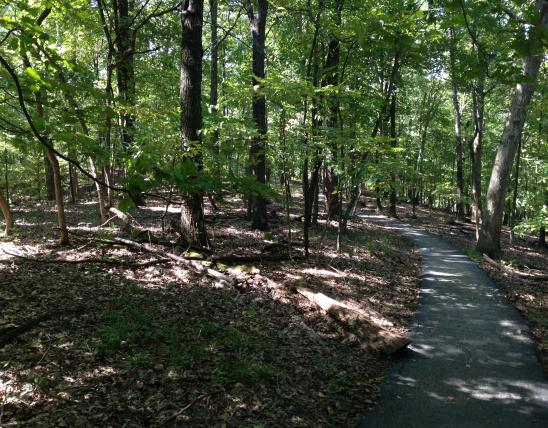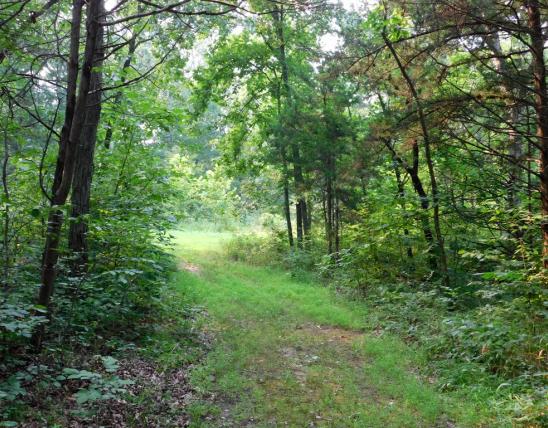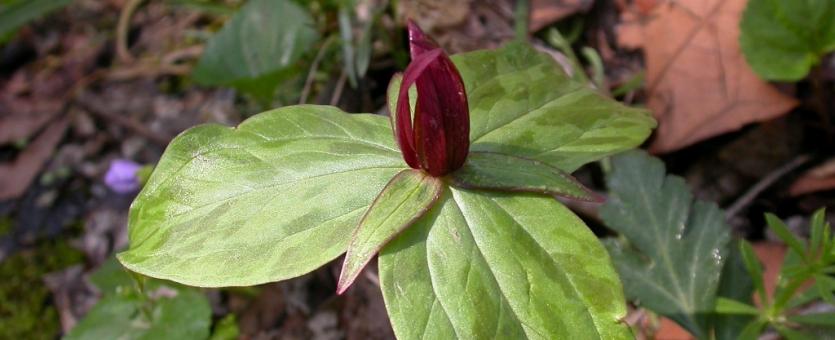
Flowers solitary, arising stemless from a whorl of leaves. Colors variable: brown, brown-purple, maroon, brick-red, brownish-yellow, greenish-yellow, greenish, or a mixture with green. Flower with 3 sepals and 3 petals; upright; to about 2 inches tall. Blooms April–June. Leaves 3 in a whorl, topping a bare stalk to 1 foot tall, ovate, pointed, sessile (lacking leaf stalks), dark green with or without grayish mottling. Root a short rhizome. Fruits many-seeded berries.
Missouri has 7 species in the genus Trillium. Purple trillium (T. recurvatum) is similar to T. sessile, but the sepals curve downward as the flower opens, and the leaves have a distinct, short stem; it is the most common trillium in eastern Missouri. Green trillium (T. viride) is taller, with sepals spread outward; petals erect, to 3 inches long, green or yellow; leaves broadly lance-shaped or nearly round, green or mottled; common in southwestern and east-central Missouri.
Height: 8–12 inches.
Statewide; common in all but the northern third of the state; apparently absent from the Mississippi Lowlands of the Bootheel.
Habitat and Conservation
Wooded slopes and bottomlands in moist, rich soil. Trilliums are popular in shade gardens but are difficult to grow from seed. This has led to unethical collecting from the wild. However, many plants do not survive transplanting. Please be aware of the sources for your plants, and insist on nursery-grown plants from cultivated stocks.
Status
Common names include “wake robin,” “trillium” and “toadshade.” “Trillium,” of course, matches the genus name, the same way the names “geranium,” “iris,” and “forsythia” do.
Human Connections
Some species of trilliums were used historically in herbal medicine, but the most common human use of these flowers is in gardening. Please don’t collect from the wild, however. Instead, buy nursery-cultivated plants from reputable sellers.
Ecosystem Connections
The flowers of this species have a fetid aroma, presumably to attract flies and other such pollinators.
